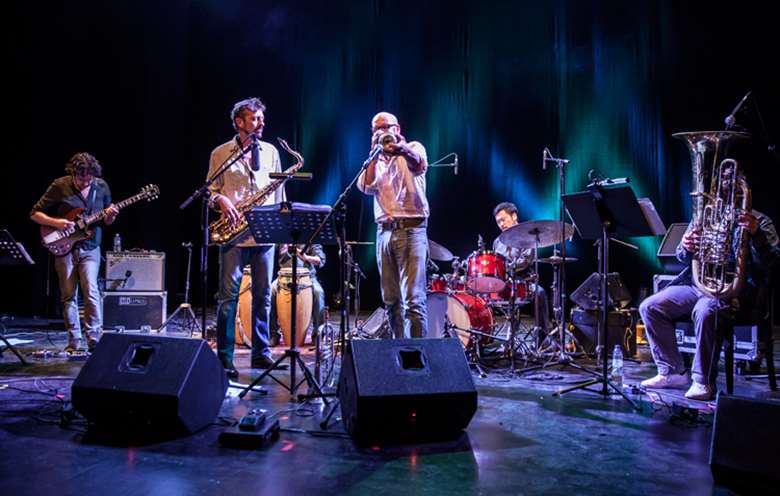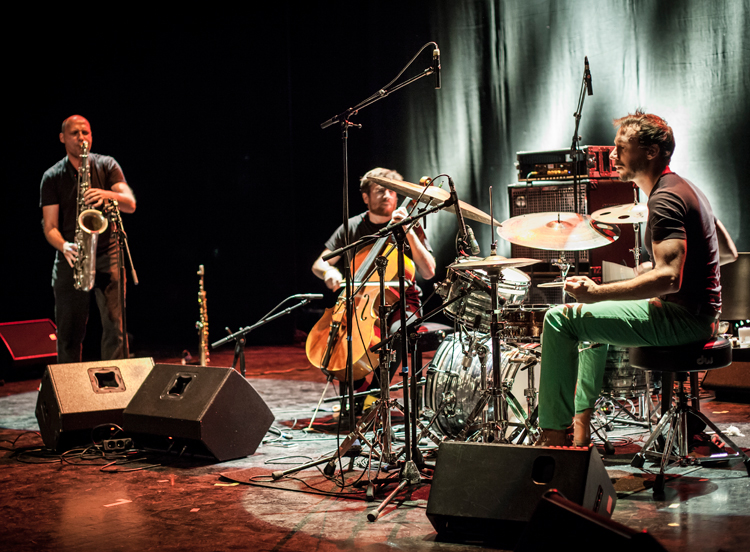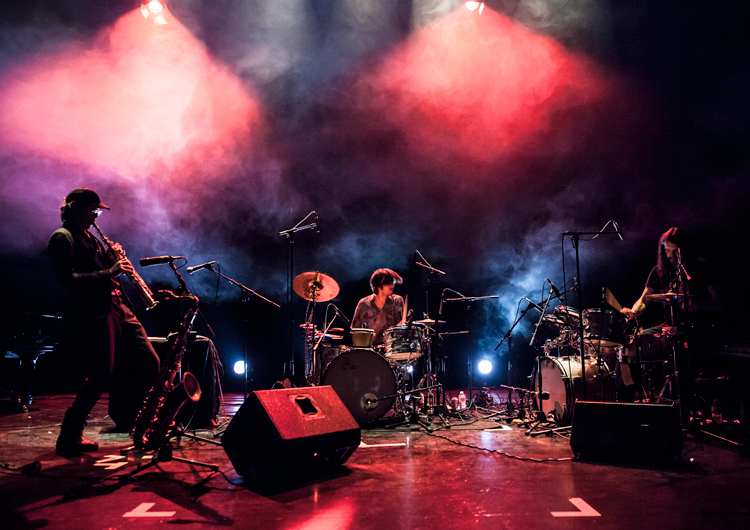Animus Anima and Mattias De Craene III get Belgian Jazz Meeting buzzing
Thursday, September 7, 2017
Belgium is a crossroads country, with its capital Brussels not only the European Union's heart, but a national mid-point between Dutch-speaking Flanders to the north and the rest of French-speaking Wallonia.

As the Belgian Jazz Meeting, held in the capital for the first time, notes in its programme: "the slightly surreal construction that our small country represents... has always been fertile soil for the whimsical genre that jazz is". Over three days of Trappist beer-oiled networking between international guests and notably idealistic managers, PRs, DJs, promoters and musicians, and a dozen diverse gigs, Belgium's position as an outsized jazz powerhouse was amply confirmed.
The Belgium Jazz Meeting began life as the Flemish Jazz Meeting, and Mik Torfs, from Flanders' Jazzlab initiative, reflected on a nation with two cultures which are growing apart. "There are separate Culture Ministers and a completely different cultural policy in Flanders and Wallonia," he said. "The Flanders government is much more positive towards jazz, small initiatives and more experimental things." Wallonia is far less generous with grants, a situation partially improved by concerted pressure from the new jazz umbrella body Museact. Torfs has watched other differences deepen. "Five or six years ago, all musicians met here in Brussels and played together, and all the bands were a mixture. But since then it's grown apart, because of increasing differences in culture, and grants. Now there are very strong scenes in Ghent and Antwerp, and so Wallonian musicians don't play with those in Ghent any more."

Animus Anima (pictured top), who I'd recently seen play driving jazz-rock at the Gaume Jazz Festival deep in rural Wallonia, focused on their more contemplative new concept album Residencé sur la Terre. Padded conga-beats and muted-trumpet animal cries lent atmosphere to rolling psychedelic drift. A long conversation with their saxophonist-composer Nicolas Ankoudinoff as the bar closed late on the final night revealed the struggle of pressing his band onward for a decade, as Belgium's small scene keeps musicians stretched thin over many bands and neighbouring countries. Belgium is a little village, others noted, which you have to break out of to survive. Another saxophonist, Manuel Hermia, spoke feelingly to me after being presented with the €10,000 Sabam Jazz Award of the opportunity it offered to keep a consistent line-up together long enough to grow. His trio Hermia/Ceccaldi/Darrifourcq (below) earlier showed a lucidly imaginative, woozy intensity, as he met drummer Sylvain Darrifourcq and cellist Valentin Ceccaldi's ominous, pulsing textures on an intricately loaded high-wire at dizzying speed.

Mattias De Craene III (below) dealt in a similarly heady atmosphere. An upturned spotlight turned dry-ice red as saxophonist De Craene plotted an exploratory path over mantric double-drum thunder. Linus – Ruben Machtelinckx's baritone guitar and banjo and Thomas Jillings' tenor sax and alto clarinet – also suited a late-night campfire or shadowy bohemian café with their pastoral, inviting intimacy. Steiger occupied nearby territory, with proggy keyboards, jerky time-signatures and a sense of avant-classical conceptual composition, though their pieces pressed on into shapelessness. Jozef Dumoulin's solo Fender Rhodes improv electronica was abrasively ugly too often for my taste, but spoke his own language. The rubbery polyrhythmic pulse of 'BRZZVLL' was their best feature, while veterans Trio Grande offered more in instrumentation – a Jew's harp's Spaghetti Western twang, Belgian bass-drum and sousaphone, for instance – than their stiff, antic playing.

Compared to a UK scene whose current pathfinder is the dance music-inflected Shabaka Hutchings, Belgian jazz still looks to rock for external energy. Dans Dans guitarist Bert Dockx gleefully shredded over the floating heaviness of bass and drums, suggesting a grunged-up Link Wray rumbling in an early 1960s British ballroom. Drifter's muscular jazz-rock anthems seemed less interesting than Lorenzo Di Maio's guitar/bass reverie and high-energy, sharp-edged, expansively optimistic sound. Antoine Pierre Urbex, an octet deploying a bank of brass for big band punch, also opted for the epic.
"The musical differences between north and south are cultural," Torfs added, offering context. "The south looks more to France, and for some reason is much more straight jazz, like Lorenzo di Maio and Urbex, and also tends towards rock. In Flanders we have much more experimental things going on with electronics and modern classical music, and look northwards to the Scandinavian countries – Linus really have that Scandinavian atmosphere, and even play with Norwegian musicians. There's also a tendency towards rock, like Dans Dans." For all he's said of two tribes pulling apart, their connection continues in jazz's open community. "Because we're a small scene, even if the influences are different, these guys play together, and they mix it into something really Belgian."
– Nick Hasted
– Photos by Massimo Municchi